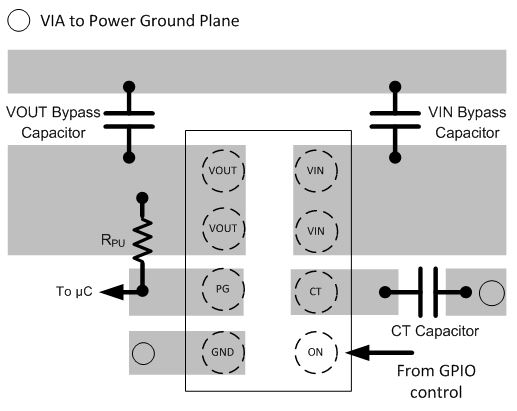JAJSDN1B April 2017 – December 2017 TPS22971
PRODUCTION DATA.
11 Layout
11.1 Layout Guidelines
All traces must be as short as possible for best performance. Using wide traces for VIN, VOUT, and GND helps minimize the parasitic electrical effects along with minimizing the thermal impedance. The CT trace must be as short as possible to reduce parasitic capacitance.
11.2 Layout Example
 Figure 30. Package Layout Examples
Figure 30. Package Layout Examples